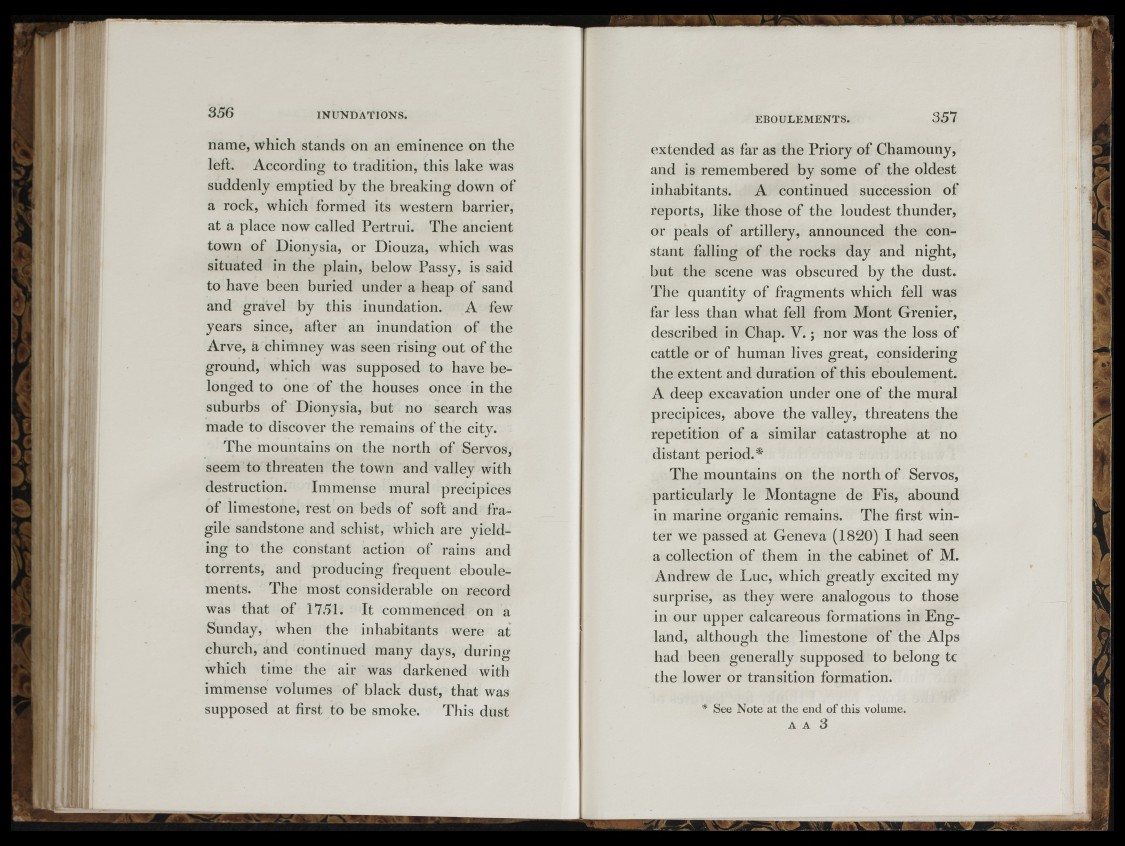
' -
f'. "
I ' . .# .m i
356 IN U N D A T IO N S .
name, which stands on an eminence on the
left. According to tradition, this lake was
suddenly emptied by the breaking down of
a rock, which formed its western barrier,
at a place now called Pertrui. The ancient
town of Dionysia, or Diouza, which was
situated in the plain, below Passy, is said
to have been buried under a heap of sand
and gravel by this inundation. A few
years since, after an inundation of the
Arve, a chimney was seen rising out of the
ground, which was supposed to have belonged
to one of the houses once in the
suburbs of Dionysia, but no search was
made to discover the remains of the city.
The mountains on the north of Servos,
seem to threaten the town and valley with
destruction. Immense mural precipices
of limestone, rest on beds of soft and fragile
sandstone and schist, which are yielding
to the constant action of rains and
torrents, and producing frequent eboulements.
The most considerable on record
was that of 1751. It commenced on a
Sunday, when the inhabitants were at
church, and continued many days, during
which time the air was darkened with
immense volumes of black dust, that was
supposed at first to be smoke. This dust
E B O U L EM E N T S . 357
extended as far as the Priory of Chamouny,
and is remembered by some of the oldest
inhabitants. A continued succession of
reports, like those of the loudest thunder,
or peals of artillery, announced the constant
falling of the rocks day and night,
but the scene was obscured by the dust.
The quantity of fragments which fell was
far less than what fell from Mont Grenier,
described in Chap. V .; nor was the loss of
cattle or of human lives great, considering
the extent and duration of this eboulement.
A deep excavation under one of the mural
precipices, above the valley, threatens the
repetition of a similar catastrophe at no
distant period.*
The mountains on the north of Servos,
particularly le Montagne de Fis, abound
in marine organic remains. The first winter
we passed at Geneva (1820) I had seen
a collection of them in the cabinet of M.
Andrew de Luc, which greatly excited my
surprise, as they were analogous to those
in our upper calcareous formations in Fngland,
although the limestone of the Alps
had been generally supposed to belong tc
the lower or transition formation.
* See Note at the end of this volume.
A A 3
f
4-